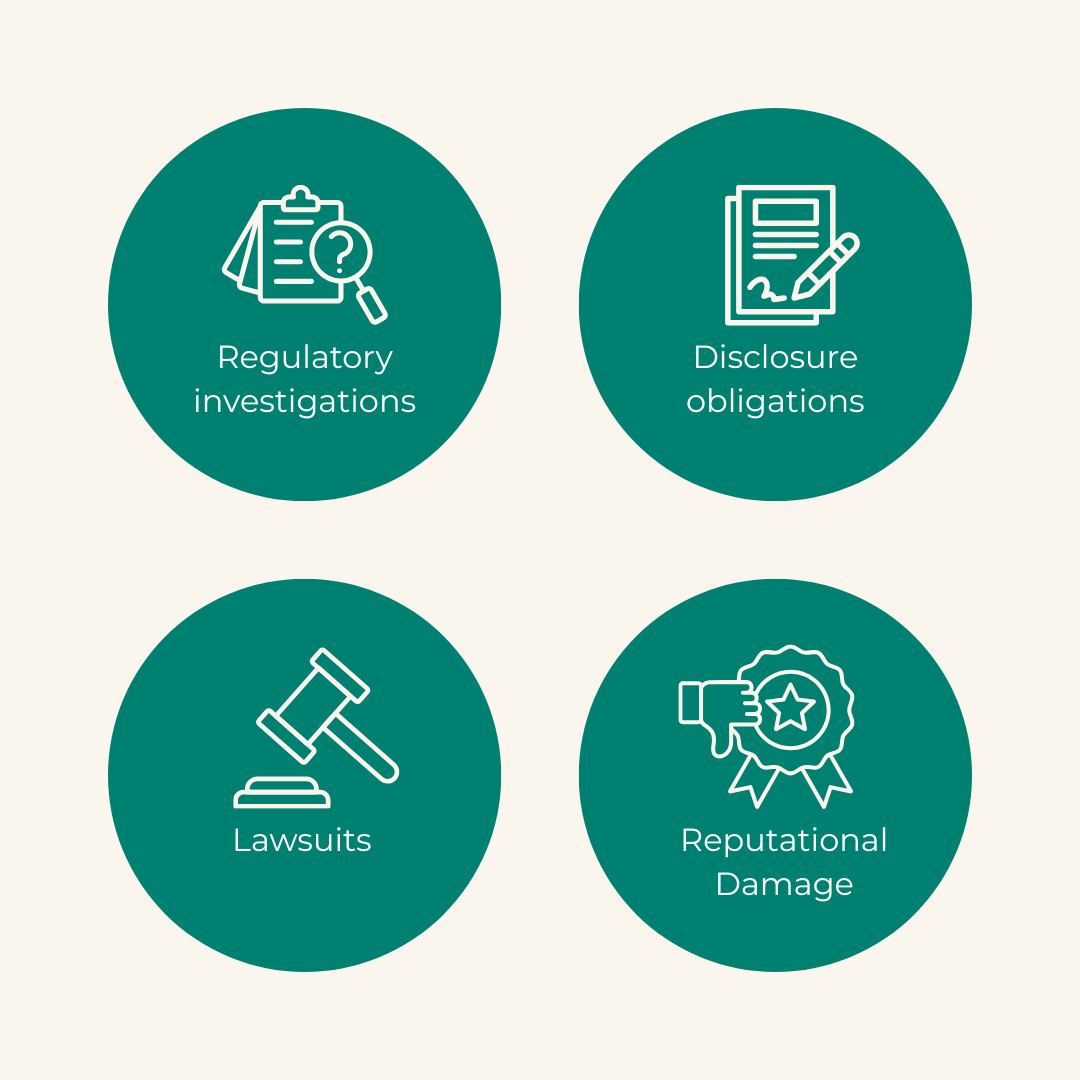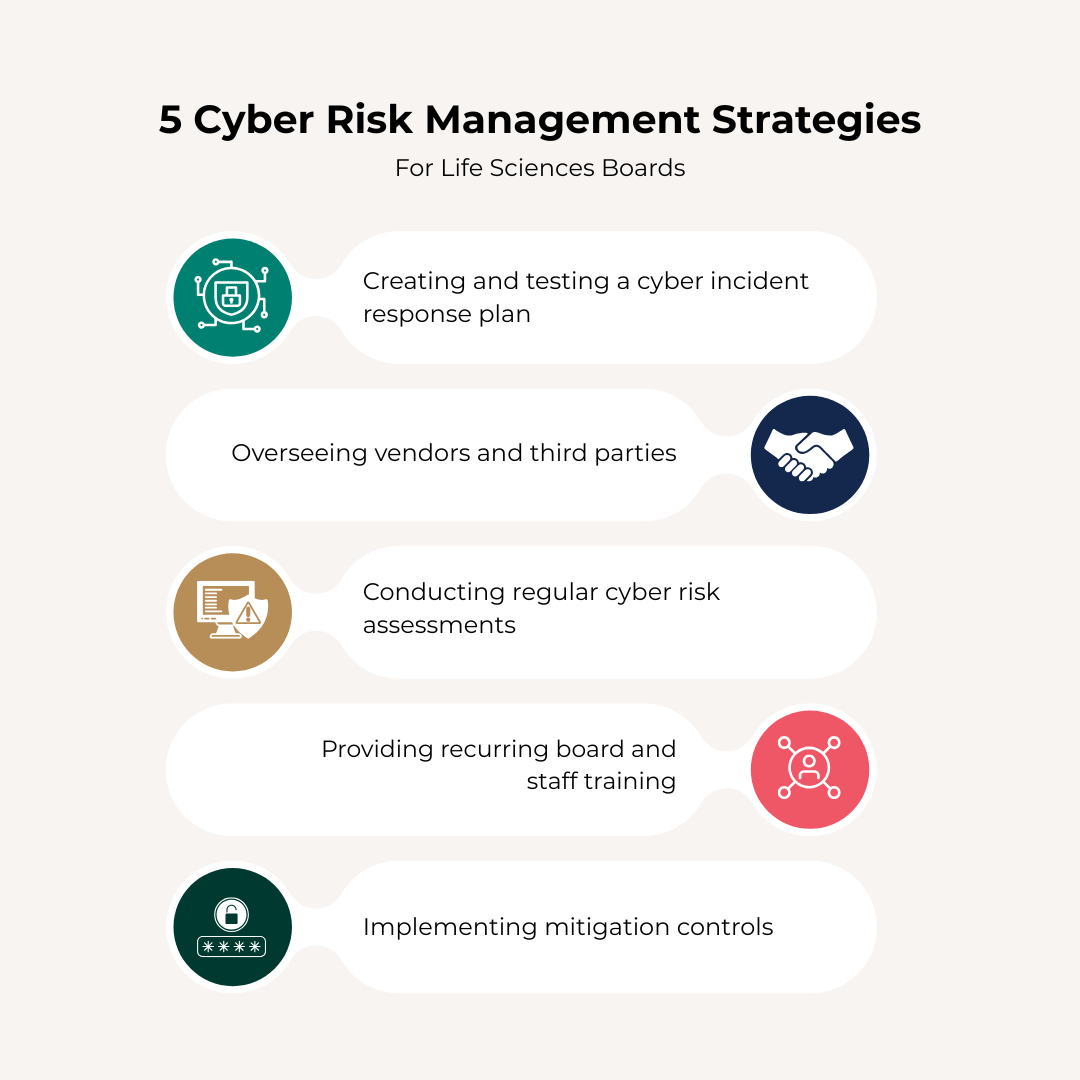We are in the midst of a technological shift that is redefining how we work and interact with the world. As life‑science companies embrace artificial intelligence, remote clinical trials, wearable devices and cloud‑based platforms, these advances accelerate innovation, but they also introduce new ethical and security responsibilities.
AI is no longer just an email drafting sidekick; it now drives decision making, data analytics, and research and development. This requires life sciences companies to ensure they are taking the proper steps to safeguard data, intellectual property, and sensitive client or patient information in the event of a cybersecurity breach.
Insurance is one of the few tools that lets a business shift risk off its own balance sheet, providing both financial and operational support when a loss occurs. While the industry was once seen as reactive, today’s policies can be engineered as proactive risk‑management tools; especially for cyber and directors and officers exposures, helping organizations anticipate and withstand evolving threats.
Cyber threat intelligence is more than an IT issue
Anyone who has received a phishing email knows that cyberattacks are becoming more common and more sophisticated. Once seen as an IT team issue; phishing, ransomware and third-party breaches can now happen to anyone with a device that is connected to the internet.

Breaches don’t just affect data; they can also lead to:
- Regulatory investigations
- Disclosure obligations
- Lawsuits from investors and clients whose data was stolen
- Reputational damage
Life sciences companies are a primary target for cybercriminals, since they often have valuable information such as patient health records, clinical data and proprietary IP. A breach can be a direct threat to business operations and leadership accountability.
Small to medium-sized life sciences companies can be especially vulnerable since they typically have fewer safeguards in place such as a cyber response plan and minimal IT support and cyber security training. This is why it’s important to consider the expertise of your board and try to ensure that at least one director brings cybersecurity expertise to the table.
It is also important to keep the conversation ongoing with your insurance broker around the topics of cyber and AI and to always maintain compliance with PIPEDA (Personal Information Protection and Electronic Documents Act), BC’s PIPA (Personal Information Protection Act) and Bill C-27, Canada’s proposed CPPA (Consumer Privacy Protection Act) if it’s passed.
Why are cyber and D&O insurance crucial for life sciences firms?
When building out your insurance policy, it’s important to review and understand the difference between cyber liability and directors and officers’ insurance.

Cyber liability insurance
Most traditional commercial insurance policies are designed to cover physical assets, not virtual property such as data or software.
The few commercial general liability policies that do provide some cyber coverage via an extension are often extremely limited. A proper comprehensive cyber liability policy should be explored as these extensions are often very thin in terms of coverage afforded.
Cyber liability insurance can cover all kinds of online attacks. It can be tailored to help your business navigate a breach response, system restoration, business interruption, cyber extortion, legal expenses and even reputation recovery. Cyber insurance is like your brakes, not glamorous, but the thing that stops the crash.
Coverages for ransomware, invoice manipulation and social‑engineering scams reside in a cyber liability policy. They are specifically found in an optional e‑crime or social‑engineering extension that many firms overlook when they first buy cyber coverage.
Directors & officers (D&O) insurance
In the context of a data breach or cyber incident, the directors and officers’ insurance may protect the company’s leadership against mismanagement claims, breach of fiduciary duty or failure to oversee cybersecurity in the event of a loss that pierces the corporate veil and leaves their personal assets exposed.
Cybersecurity is now seen as a key governance issue. Failure to provide proper oversight can trigger an uninsured directors and officers claim.
To close this gap, companies should adopt strong cyber risk controls from dual approval payment processes to employee phishing drills. They should also confirm that their cyber policy is active and includes e‑crime coverages.
Cyber breach case study
Consider a scenario where an employee accidentally clicks on a phishing email. This triggers a ransomware attack that locks the company’s systems and threatens to share patient information. The attackers demand a significant payment for the decryption key.
With a proper cyber policy in place, the company gains immediate access to a specialized claims and response team. They negotiate with the cybercriminals, restore the company’s systems and provide resources to help mitigate the negative publicity from the attack.
If later investigations reveal that the board failed to adequately assess or oversee cybersecurity measures, directors could face personal liability for breach of fiduciary duty. A comprehensive directors and officers policy can shield their personal assets. This ensures that leadership can respond to the crisis without fear of personal financial ruin.
5 cyber risk management strategies for life sciences boards
Let’s talk about what your risk management plan looks like. Risk management ensures that board members and leadership are implementing proactive strategies that are designed to reduce cyber and board-level risks. They can include:

- Creating and testing a cyber incident response plan
This should have protocols for staff and board members to take following a suspected cyber breach. Assign designated responsibilities for responders and have communications tactics in place to notify others about the incident. - Overseeing vendors and third parties
Confirm that the vendors and partners that your company works with have robust cyber hygiene practices in place to prevent supply chain breaches. - Conducting regular cyber risk assessments
These can help you to identify vulnerabilities within your system and mitigate potential risks. - Providing recurring board and staff training
Regular security training enables you to increase phishing awareness and keep everyone up to date on evolving risks and threat patterns. - Implementing mitigation controls
Enforce multifactor authentication, data encryption, firewalls and backup procedures.
As your broker, my job isn’t to push a policy — it’s to help build a plan. That might include securing the right cyber liability policy, or it might be about strengthening your cyber hygiene and multi-factor authentication protocols. Whatever your situation, let’s talk about what happens if your systems are locked down tomorrow. Who’s your first call? What’s your plan?
Cyber insurance policy underwriting: Key board responsibilities
When underwriting your policy, it’s important to know what the insurer is looking for to place your coverage. Typically, insurance companies now want to see that there is some type of mitigation controls in place such as multi-factor authentication and if there are any offline or online backups of data. Underwriters will also want to know what sort of information is being stored, how long records are stored for and who has access to them.
When drafting a policy, boards should be prepared to demonstrate the cyber training protocols that are currently in place, your incident response plan and how you are planning to integrate cybersecurity into corporate governance. It can also be useful to outsource cyber training to a reputable third-party company who specializes in cybersecurity if there is not a Chief Information Security Officer or someone of that nature on the board.
Lastly, working with your insurance company and broker for additional resources and training videos is always welcomed.
Final takeaway: Cyber risk literacy is essential to leadership

Cyber and directors and officers’ exposures are no longer separate risks; they are intertwined realities in today’s digital-first business environment.
Treat insurance as a proactive part of your risk‑management strategy. By reviewing coverages each year, running regular risk assessments and anticipating emerging threats, your organization protects more than just data, it shields its leadership team and the hard‑earned reputation and work being done.
As a trusted risk advisor at Acera Insurance, I guide life science companies from incubator stages raising their first round all the way to commercialization, by placing commercial insurance policies and keeping the insurance program under regular review.
I do think that a great way to approach risk management is to build the insurance program alongside the company’s growth and innovation, keeping up with changes internally and externally. The insurance industry is also changing and it’s important to make sure the policies that are put in place are reviewed and kept up to date.
Safeguard your business, IP and boardroom. Connect with Bryce today to start the conversation
Bryce Chaddock is a client executive and an employee owner with Acera Insurance. After graduating from British Columbia Institute of Technology in 2018, Bryce began a successful insurance carrier with Acera Insurance that continues to this day. Bryce is Licensed in British Columbia, Alberta and Ontario, and while Bryce works in many commercial sectors, he specializes in life sciences and healthcare. He holds his CAIB, CIP, CRM and RIBO designations, enjoys working on complex insurance programs, advocating for his clients and becoming their trusted risk advisor. You can connect with Bryce at 604.294.3301 or bryce.chaddock@acera.ca
Information and services provided by Acera Insurance, Acera Benefits and any other tradename and/or subsidiary or affiliate of Acera Insurance Services Ltd. (“Acera”), should not be considered legal, tax, or financial advice. While we strive to provide accurate and up-to-date information, we recommend consulting a qualified financial planner, lawyer, accountant, tax advisor or other professional for advice specific to your situation. Tax, employment, pension, disability and investment laws and regulations vary by jurisdiction and are subject to change. Acera is not responsible for any decisions made based on the information provided.

